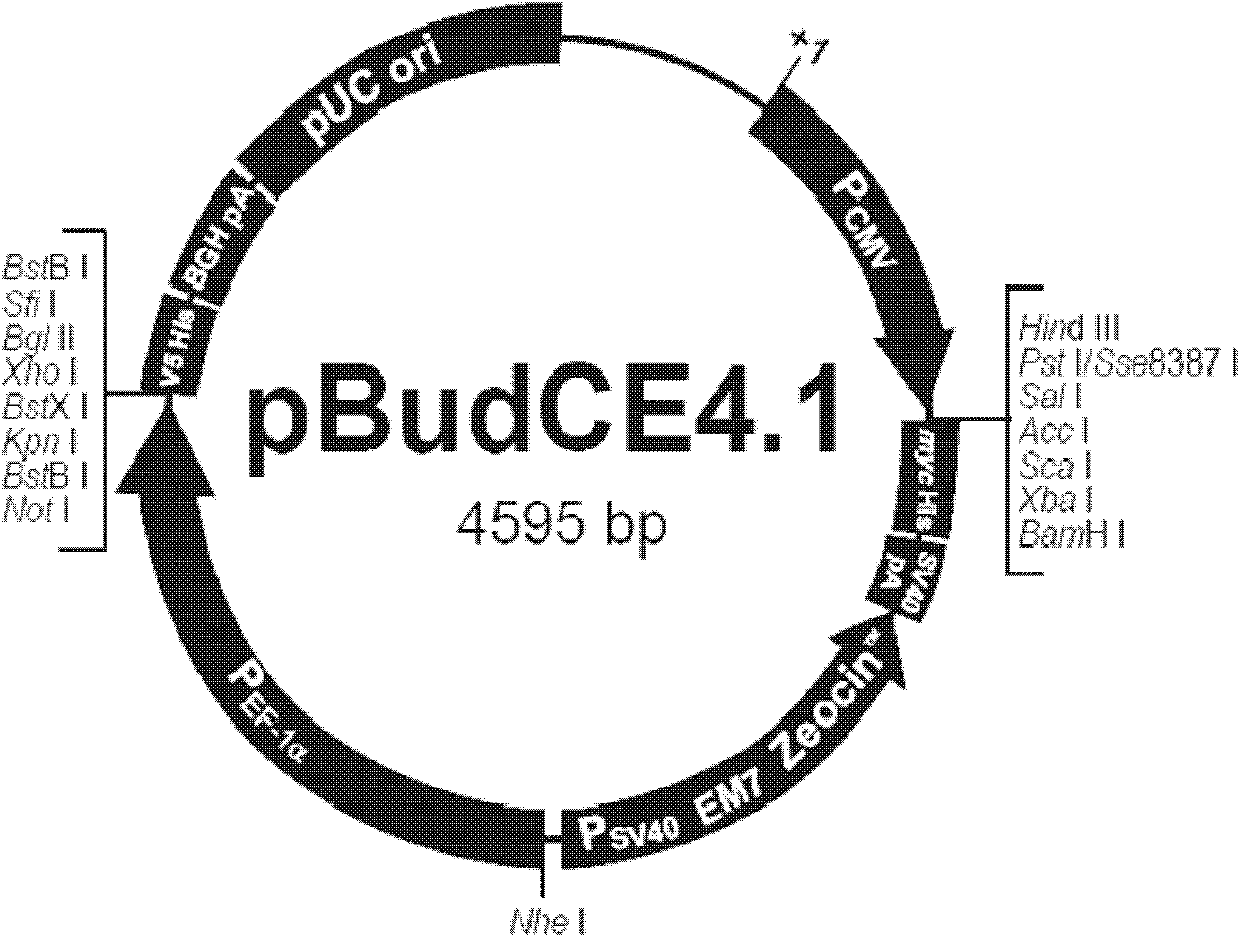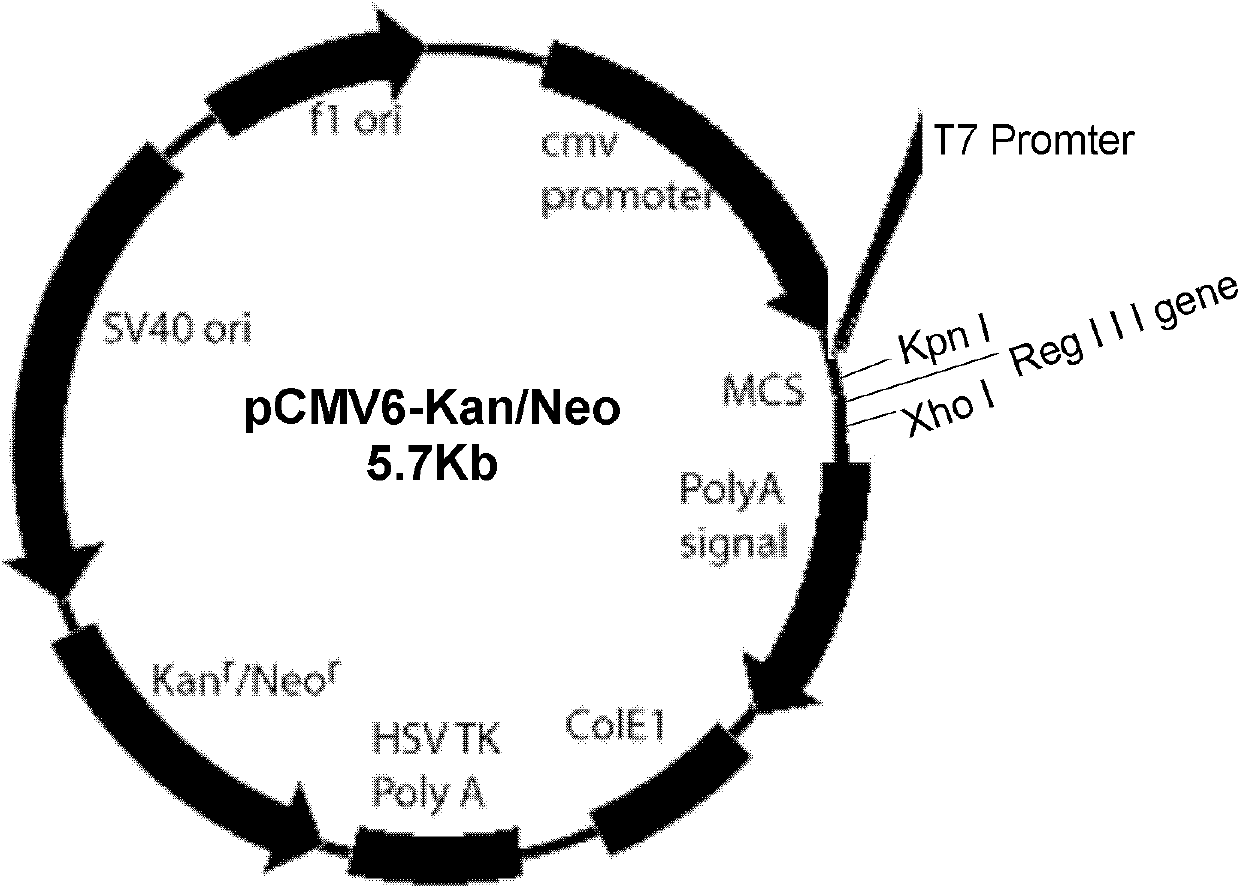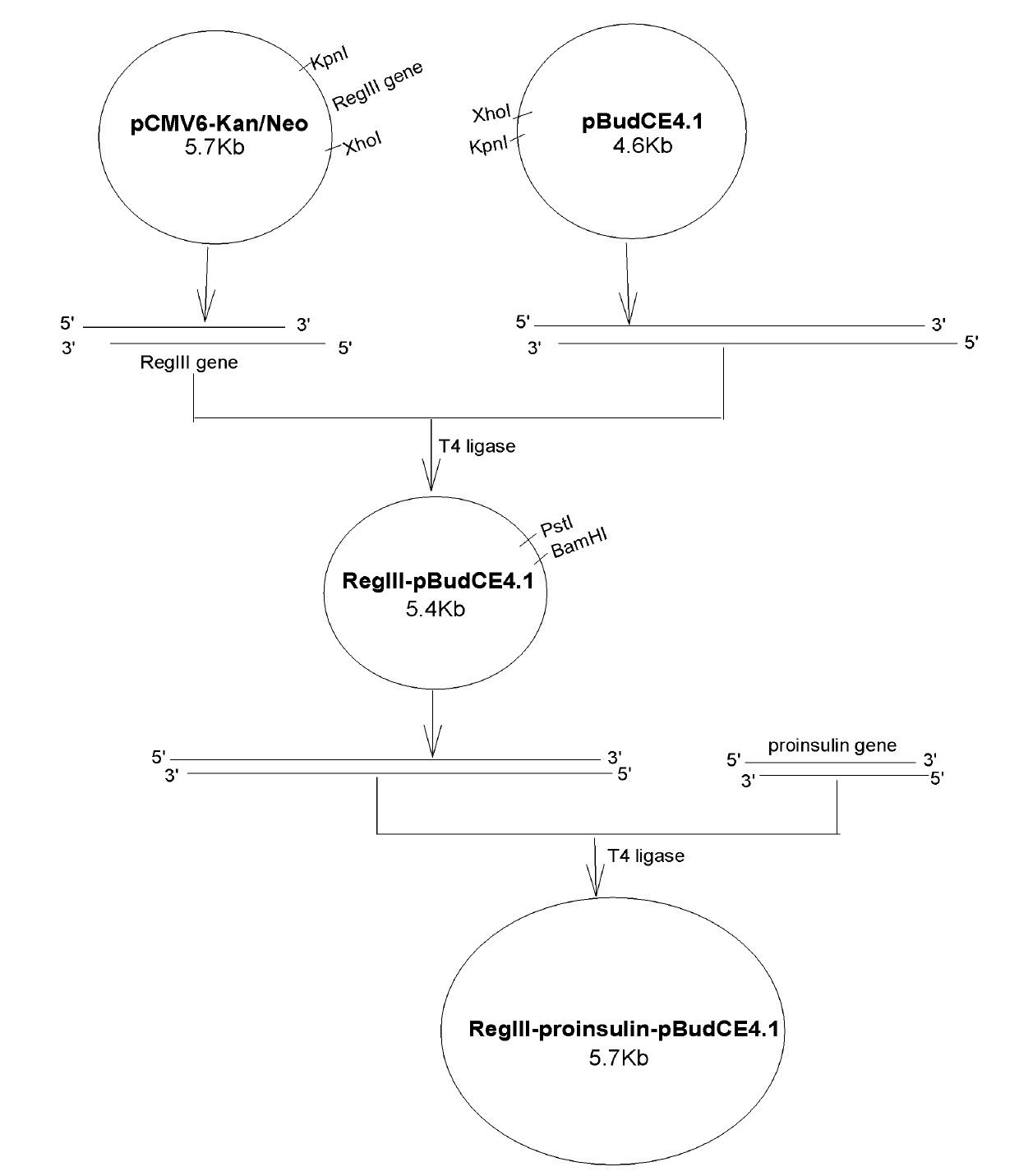Reg III/proinsulin double-gene plasmid as well as building method and application thereof
A proinsulin, dual gene technology, applied in the fields of genetic engineering and gene therapy, can solve problems such as difficulties, and achieve the effects of inhibiting proliferation, improving symptoms of hyperglycemia, and restoring balance
- Summary
- Abstract
- Description
- Claims
- Application Information
AI Technical Summary
Problems solved by technology
Method used
Image
Examples
Embodiment 1
[0050] Construction and Identification of RegIII / Proinsulin Double Gene Eukaryotic Co-expression Plasmid
[0051] The pCMV6-Kan / Neo plasmid vector (product of Beijing Origene Co., Ltd.) containing the RegIII gene was double-digested with restriction endonucleases Kpn I and XhoI to obtain the RegIII gene fragment, and double-digested with restriction endonucleases Kpn I and XhoI pBudCE4.1 empty plasmid vector (product of Invitrogen, USA), and T4 DNA ligase was used to connect the RegIII gene fragment and pBudCE4.1 plasmid vector at a molar ratio of 5:1 to construct a single-gene plasmid containing the RegIII gene.
[0052] Take the pancreas of the mouse, extract the total mRNA with Trizol reagent, reverse transcribe it into cDNA, use it as a template, and use the upstream and downstream primers of the proinsulin gene (upstream primers: 5′-3′: CATA CTGCAG GCCTATCTTCCAGGTTATTGTTTC (the underlined part is the Pst I restriction site; downstream primer: 5′-3′: CGTC GGATCC CTAGTTGC...
Embodiment 2
[0055] Establishment of type 1 diabetes mouse model and gene therapy method
[0056] Select male SPF Balb / c mice with a body weight of 16-20g and 6-8 weeks of age, and use a small dose of STZ (40mg / Kg) to establish a type 1 diabetic mouse model by intraperitoneal injection for 5 consecutive days. Blood glucose greater than 16.7mmol / L is the criterion for successful establishment of the model.
[0057] After the successful establishment of the type 1 diabetic mouse model, the diabetic mice were randomly divided into a model group, a pBudCE4.1 empty vector control group (pBudCE4.1) and a RegIII / proinsulin dual gene plasmid group (RegIII-proinsulin -pBudCE4.1), 10 mice in each group; another 10 unmodeled Balb / c mice were used as the normal control group.
[0058] On the day of grouping, mice in RegIII / proinsulin double gene group were given intramuscular injection of RegIII / proinsulin double gene eukaryotic co-expression plasmid 100 μg / mouse in the left hind limb; pBudCE4.1 empt...
Embodiment 3
[0060] Effect of RegIII / proinsulin double-gene co-expression plasmid on blood glucose in type 1 diabetic mice
[0061] After successful modeling, the blood glucose of mice in each group was measured the next day, using a JPS-III blood glucose measuring instrument produced by Beijing Yicheng Bioelectronic Technology Co., Ltd. for measurement. The results are shown in Table 1. After 4 weeks of treatment, the blood glucose of pBudCE4.1 empty plasmid control group and model group mice were significantly higher than 16.7mmol / L, and increased with time; After 1 week of nuclear co-expression plasmid treatment, the hyperglycemia symptoms of diabetic mice were significantly improved (P<0.01), and the blood glucose of mice continued to decrease and gradually stabilized after 3 consecutive administrations. It shows that the RegIII / proinsulin double-gene eukaryotic co-expression plasmid can significantly improve the hyperglycemia symptoms of type 1 diabetic mice.
[0062] Table 1 Effects...
PUM
 Login to View More
Login to View More Abstract
Description
Claims
Application Information
 Login to View More
Login to View More - R&D
- Intellectual Property
- Life Sciences
- Materials
- Tech Scout
- Unparalleled Data Quality
- Higher Quality Content
- 60% Fewer Hallucinations
Browse by: Latest US Patents, China's latest patents, Technical Efficacy Thesaurus, Application Domain, Technology Topic, Popular Technical Reports.
© 2025 PatSnap. All rights reserved.Legal|Privacy policy|Modern Slavery Act Transparency Statement|Sitemap|About US| Contact US: help@patsnap.com



